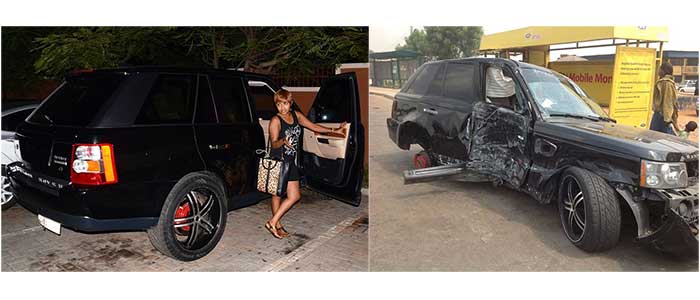Technology

- Wajaja King
- Category: Technology
- Tuesday, 09 May 2017 05:10
OMG! Checkout BMW's most advanced car for 2021: the iNext Electric Crossover car...
BMW’s most advanced car ever is now on track to launch in 2021. It’s called the iNext. No surprises that it focuses on all the industry’s mega-trends. It’s a mid-size electric crossover designed around self-driving and connectivity.
It’s jolly well going to have to be advanced, because it will go on sale a year after Mercedes’ long-range electric crossover, three years after Audi’s, four years after Jaguar’s and five after Tesla’s.
BMW has announced that it will be built at the firm’s Dingolfing plant, north-west of Munich. That’s putting a concrete stake in the ground that it’s really going to happen.
In the meantime, if you want a full-electric car that doesn’t look as out-there as the i3, you will soon be able to travel silently in plainer clothes. An electric Mini is due in 2019. Then in 2020 the electric X3 will be the first full-EV version of a core BMW bodyshell.
The i brand won’t have to wait until the iNext for some titivation. The i8 Roadster is officially due in 2018.
This one has been trailed with concept versions for a while now. Find us another open-roofed all-wheel-drive mid-engined plug-in hybrid. Ah yes, the Porsche 918.
There’s also an i3 facelift in the works.
But back to the iNext. It’ll probably get a number badge for the production version – i4 or i5. The firm has registered all the i numbers between i3 and i8.
BMW wants to sell large numbers, which is why it’s in the hot-cakes segment: crossover. A BMW contact tells Top Gear the silhouette isn’t so different from the Jaguar I-Pace.
So if you were thinking it’d look like the Vision Next 100 concept (pictured aboved), think again. It’s a crossover, right, not a shape-shifting scaly armadillo.

The interior is said to be a big step on from today’s BMW’s because it’s designed for what BMW calls ‘boost mode’. This supports the driver’s skills by indicating not just hazards but for instance the best cornering lines and braking points. It uses whole-screen head-up display, and even, on concept versions, dashboard components in the driver’s peripheral vision that move and change colour.
The car will launch with what’s called level three autonomy. This is defined by SAE standard J3016 as ‘conditional automation’ where the car will steer and brake and monitor the whole environment around the car, but the driver must be available as a fallback. (Even the most automated cars today are level two, where the driver is expected to monitor the surroundings all the time.)
After a year or so, a version of the iNext will be available with level four automation. Here the car does all the work and never expects the driver to intervene. At least in most circumstances. It might not be able to work in, say, complex city driving. The SAE defines a level five car as one that can do all the driving all the time with no human monitoring.
Autonomous driving won’t be the only key new tech in the iNext. It will also also have next-generation batteries to give it longer range – 300 miles-plus will be every rival’s base level by then – and faster charging.
Lightweight body construction is also central to its makeup. The choice of of Dingolfing implies it will be a mixed-material car, with lots of aluminium. Dingolfing is where BMW made the aluminium shells for the Z8 and Rolls Phantom. It now it builds the 7 Series out of a combination of carbonfibre, aluminium and steel. the iNext will get more carbonfibre than the 7 Series.
The all-carbon upper bodies for the i3 and i8, on the other hand, are made in the firm’s Leipzig plant. This technology is simply too expensive for a big-volume car.
www.topgear.com

















































































